
16 11 24 29 How To Build Connection And Foster A Sense Of Community In The Hybrid Workplace - Daan van Rossum, FlexOS Flexibility Will Be Key To Talent Mobility In 2023 - Erin Almand, Montway Auto Transport Hybrid Work And Wellness: Going The Distance For Engagement - Laura Neuffer, Carebook Technologies How 9 Businesses Are Updating Their Employee Excellence Strategies in 2023 - Brett Farmiloe, Terkel.io JANUARY 2023 • Vol.10 • No.01 (ISSN 2564-1999) Themed Edition on Hybrid Work Model - Best Practices/ Challenges/ Benefits MAKE HYBRID-WORK WORK BETTER FOR ALL - Morag Barrett, CEO, Eric Spencer, COO and Ruby Vesely, Executive Coach and Facilitator, SkyeTeam MAKE HYBRID-WORK WORK BETTER FOR ALL - Morag Barrett, CEO, Eric Spencer, COO and Ruby Vesely, Executive Coach and Facilitator, SkyeTeam

Make Hybrid-Work Work Better for All Four tips for leaders and team members working in a hybrid world - Morag Barrett, CEO, Eric Spencer, COO, and Ruby Vesely, Coach and Facilitator, SkyeTeam 07 INDEX On the Cover Human Experience Excellence - Engagement, Performance, Rewards & Recognition JANUARY 2023 Vol.10 No.01 Articles (ISSN 2564-1999) 14 ER Pros Are Burning Out It’s time to put our oxygen mask on first - Deb Muller, CEO, HR Acuity 19 People And Productivity Hacks For 2023 4 key areas of focus that should be part of a new action plan - Kim Baker, Corporate Consultant, and Speaker, Vivid Performance Group 27 How To Make Your Employees Feel Valued Recognition must be genuine, specific, sincere, and timely - John Tschohl, President and Founder, Service Quality Institute 35 Creating Coach-Guided Workplaces In 2023 Increased adoption of professional coaching will become a leading trend - Magdalena Nowicka Mook, Executive Director and CEO, The International Coaching Federation 38 Why And How To Use Stay Interviews Successfully Build productive one-on-one relationships with employees - Kevin Sheridan, Speaker, Employee Engagement and Virtual Management Expert, Author, Kevin Sheridan LLC 42 Emotional Connection Is The Key To Employee Engagement And Retention How does emotional connection drive employee engagement? - Joe Hart, President and CEO, Dale Carnegie Training Themed Edition on Hybrid Work Model - Best Practices/ Challenges/ Benefits
How To Build Connection And Foster A Sense Of Community In
The Hybrid Workplace
Make your employees feel seen, heard, and acknowledged

- Daan van Rossum, CEO, FlexOS
Flexibility
Will Be Key To Talent Mobility In 2023

The essential role of employee relocation in the hybrid era - Erin Almand, Vice President, Montway Auto Transport
Hybrid Work And Wellness: Going The Distance For Engagement




Create a helpful, not harmful, hybrid environment
- Laura Neuffer, Wellness Content Development Coordinator, Carebook Technologies
How 9 Businesses Are Updating Their Employee Excellence Strategies in 2023
Recognizing employee success, adding competitive benefits and much more
- Brett Farmiloe, CEO and CHRO, Terkel.io
Top Picks
11 16 24 29
INDEX
Human Experience Excellence - Monthly Interactive Learning Journal



The future is all about going beyond the employee experience to focus on human experience. This monthly interactive learning experience showcases strategies and programs to improve employee performance and strengthen your team.
Human Experience Virtual Events
Virtual Events in the Recognition and Engagement track will give you everything you need to recognize and reward employees creating an inspired workforce and organization that will drive innovation and boost productivity. Sessions feature the world’s top thought leaders in the recognition and engagement space covering topics from customer loyalty, safety, sales, company culture and motivation to what makes an effective and efficient results-based program. Each Virtual Event consists of up to 10 credit webcasts.
Human Experience Webcasts for Credit
HR.com webcasts deliver the latest Recognition and Engagement industry news, research trends, best practices and case studies directly to your desktop. Webcasts are available live online with a downloadable podcast and a copy of the slides (PDF) available before and after each webcast. Earn all of the required recertification credits for aPHR, PHR, SPHR, GPHR, and SHRM Certifications. HR.com’s one-hour webcasts, in every HR specialty including HRIS and Payroll, are pre-approved for HRCI and SHRM credit (excluding Demo webcasts).
IHR Rewards and Recognition Community
Join almost 25,600 HR.com members with a similar interest and focus on rewards and recognition. Share content and download research reports, blogs, and articles, network, and “follow” peers and have them “follow” you in a social network platform to communicate regularly and stay on top of the latest updates. This well established Rewards and Recognition Community is an invaluable resource for any HR professional or manager.
SEP 2017 Vol. 5 No. 09 JANUARY 2021 Vol.08 No.01 18 12 25 30 Digital Is All The Rage: Why Employee Rewards Must Include Digital Options In 2021 - Theresa McEndree, Blackhawk Network Employee Experience Trends In 2021Tips To Increasing Your Reward And Recognition Strategies Post-Covid - Richelle Taylor, One10 How To Create Meaningful - Mike Byam, Terryberry HOW TO EMBRACE THE SHIFTS THAT OCCUR AS WE RETURN TO A NEW NORMAL WORKPLACE Key workplace trends for 2021 - David Roberts, Chief E�ecutive �fficer, �lchemer �hemed Edition on Agile Reward & Recognition Strategies How are our Human Experience Products and Services helping to make you smarter? Use these invaluable Human Experience resources today! For more information phone: 1.877.472.6648 | email: sales@hr.com | www.hr.com
Editorial Purpose
Excellence Publications
Human Experience Excellence Team
Submissions & Correspondence
Debbie Mcgrath Publisher, HR.com
The Hybrid World of Work in 2023
It's been almost three years since Covid hit us and by now it is clear that hybrid work environments are here to stay. Although hybrid work provides the flexibility for employees to work in ways that are most effective for them, there are associated challenges too. However, now's the time for organizations to determine how to make hybrid work as engaging and productive as possible and create an inclusive environment where all can feel connected and valued and ensuring that everyone’s voice is heard, wherever they are working.
The January edition of Human Experience Excellence includes informative articles on hybrid work trends, engagement strategies for a better workplace, creating a culture of recognition, and much more.
With the return to the office and transition to hybrid work, our challenges are more than simply determining whether we still fit in our business casual clothes. Now’s the time to sit up and pay attention, to make a thoughtful and planned re-entry into the three-dimensional world that reflects the needs of those in the office, those at home, and everyone (and thing) in between. Check out the article, Make Hybrid-Work Work Better For All by SkyeTeam's Morag Barrett, Eric Spencer, and Ruby Vesely, to learn their tips for leaders and team members working in a hybrid world
Based on the research conducted by Humu, with the shift towards more hybrid and part-time workplaces, a growing majority of employees say that relationships with colleagues, collaboration, and communication
Babitha Balakrishnan Editor, Human Experience Excellence

with teammates are the three most challenging aspects of hybrid work, even more so than relationships with their managers. FlexOS’ Daan van Rossum in his article, How To Build Connection And Foster A Sense Of Community In The Hybrid Workplace shares helpful strategies for creating connections in today’s hybrid workplace.
From investing in technology that supports a hybrid workforce to establishing collaboration policies for hybrid teams, Carebook Techologies' Laura Neuffer offers strategies to manage a hybrid environment in her article, Hybrid Work And Wellness: Going The Distance For Engagement.

Managing a distributed workforce can be challenging, but with clear communication, the right technology, and fully digital health and wellness programs, businesses will be prepared to adapt to evolving circumstances while supporting the effective collaboration and health of their remote/hybrid teams.
In summary, make your employees feel seen, heard, and acknowledged, wherever they work from..
We hope you enjoy reading all the insightful articles and get back to us with your valuable feedback!
Happy Reading!
Write to the
at ePubEditors@hr.com
Disclaimer: The views, information, or opinions expressed in the Excellence ePublications are solely those of the authors and do not necessarily represent those of HR.com and its employees. Under no circumstances shall HR.com or its partners or affiliates be responsible or liable for any indirect or incidental damages arising out of these opinions and content.
NOTE
EDITOR’S
OR For Advertising Opportunities, email:
sales@hr.com Copyright © 2023 HR.com. No part of this publication may be reproduced or transmitted in any form without written permission from the publisher. Quotations must be credited.
Our mission is to promote personal and professional development based on constructive values, sound ethics, and timeless principles.
Debbie McGrath CEO, HR.com - Publisher Sue Kelley Director (Product, Marketing, and Research) Babitha Balakrishnan and Deepa Damodaran Excellence Publications Managers and Editors
Babitha Balakrishnan Editor Arun Kumar R Design and Layout (Digital Magazine) Chandra Shekar A K Magazine (Online Version)
Please send any correspondence, articles, letters to the editor, and requests to reprint, republish, or excerpt articles to
For customer service, or information on products and services, call 1-877-472-6648 Human Experience Excellence (ISSN 2564-1999) is published monthly by HR.com Limited, 56
1L0 Internet Address
www.hr.com Subscribe now for $99 / year And get this magazine delivered to your inbox every month Become a Member Today to get it FREE! SIGN UP
ePubEditors@hr.com
Malone Road, Jacksons Point, Ontario L0E
:
Editor
In a world of unparalleled challenges (global pandemic, racial injustice, political rivalry, digital 4.0, emotional malaise), uncertainty reigns. Finding opportunity in this context requires harnessing uncertainty and harnessing starts with reliable, valid, timely, and useful information. The Excellence publications are a superb source of such information. The authors provide insights with impact that will guide thought and action.
Dave Ulrich
Rensis Likert Professor, Ross School of Business, University of Michigan Partner, The RBL Group

Excellence publications are my ‘go-to’ resource for contemporary and actionable information to improve leadership, engagement, results, and retention. Each edition offers rich and diverse perspectives for improving the employee experience and the workplace in general.

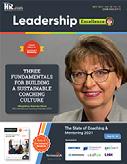
Julie Winkle Giulioni
Author, Virtual /Live Keynote Presenter, Inc.’s Top 100 Leadership Speakers

I regularly read and contribute to Leadership Excellence and Talent Management Excellence. I use many of the articles I read to augment my own presentations and I often share the articles with my clients. They are always quick, right on target for the latest issues in my field, and appreciated by my clients.


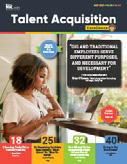
If you want to stay up to date on the latest HR trends, choose a few of the different issues from the Excellence series of publications.
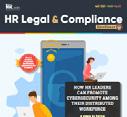






 Dr. Beverly Kaye
Dr. Beverly Kaye
CEO, BevKaye&Co.

We’re eager to hear your feedback on our magazines. Let us know your thoughts at
WHY EXCELLENCE PUBLICATIONS?
ePubEditors@hr.com
Make Hybrid-Work Work Better for All
Four tips for leaders and team members working in a hybrid world
By Morag Barrett, Eric Spencer,and Ruby Vesely, SkyeTeam
During the last few years, we’ve all become intimately familiar with remote work and virtual meetings. My life felt like it had become one long zoom-skype-Webex-hangout-meet video fest - without a ‘good hair day’.
With the return to the office and hybrid work, our challenges are more than simply whether we still fit in our business casual clothes. We’re starting to experience meetings with a mix of people ‘in the room’ and others attending ‘out of the room’.
Having a decent camera, microphone and a light or two are now the table stakes for showing up online. However, this doesn’t mean we’ve mastered the art of working as a distributed team, at least not according to the leaders we’re working with.
We know hybrid meetings and teams operated before the pandemic; however, we’d argue that the experience of hybrid meetings and teams weren't good then either. In the times BC (before Covid) those who attended remotely, often described feeling like a second-class member of the team. If you’ve watched your colleagues tucking into snacks or writing on a flipchart that you can’t see, then you’ll know what we mean!
We’ve been working on and leading remote teams for more than twenty years, and during the last two
years, we’ve attended great virtual meetings and, unfortunately, been invited to quite a few that, well to be honest, sucked. Now’s the time to sit up and pay attention, to make a thoughtful and planned re-entry into the three-dimensional world that reflects the needs of those in the office, those at home, and everyone (and thing) in between.
The “New Normal” is No Longer New
The leaders we’re working with have shared that while relationships within their immediate team seem to have remained consistently strong, the horizontal relationships across the organization and between teams have suffered. Even when the health of their own team is described as 'ok’, those leaders acknowledge that meetings have become a little more transactional, with a hub-and-spoke dynamic, where the leaders talk, and the team members respond. Work is getting done, but creativity, innovation, teamwork, and cross-functional collaboration have declined.
This may not have seemed like such a big deal when working from home was only going to be a short-term temporary experience that we could wait out. However, as that timeline for return extended, the new (bad) habits became the new normal. We need to break the unhealthy patterns that may have emerged and ensure we are investing in our relationships as well as the systems and processes at work.
Human Experience Excellence presented by HR.com January 2023 7 Submit Your Articles
COVER ARTICLE
One of Morag’s coaching clients, the CFO for a major telecom organization, recently shared that he couldn’t wait for the return to the office. The professional relationships within his company were starting to fragment as evidenced by their recent employee engagement feedback. The results had tanked, and team members were unhappy. The cracks and fissures that existed before his organization moved to a virtual environment had become chasms that were slowing down the team’s ability to collaborate and innovate. When everyone worked in the same office, those cracks were more easily papered over, or worked around, via the watercooler conversations or the occasional coffee or lunch meeting. However, in the virtual environment, video calls had fallen into the trap of being focused on what someone was doing, rather than how someone was doing, and as a result, tensions were starting to fester. He recognized the need to be thoughtful and deliberate as the team moved to a hybrid operating model to avoid bringing the unhealthy baggage that had accumulated.
Whether you are leading a team, or part of a team that’s working virtually or in a hybrid arrangement, you can cocreate the new operating agreements for your hybrid work experience. We’re firm believers in going first, especially when it comes to building the powerful relationships needed for high-performing teams. We share those insights in our new book, You, Me, We:
Why We All Need a Friend at Work (and How To Show Up As One!). Here are four approaches you can adapt and adopt today.

1. Welcome Back ALL Employees
As the CFO planned for his organization to return to the office, he realized that a large majority had joined his team during the pandemic. They had never been in the building, nor met their colleagues in person, even though they had been working together for two years. They didn’t know where anything was. Even the longer-tenured employees were out of touch with the slightly reorganized space that they would be returning to.
As the team reconnected, they designed a series of fun events for everyone. These events included the basics – restrooms, new café hours, through to how to use the photocopier and most importantly, the coffee machine!
Their success was in including all employees in this reorientation process. The process was a journey and not a one-off event, and by making it fun, creating time and activities for reconnecting, the sense of team was strengthened, and relationships rekindled.
What will you do to welcome back all team members, old and new?
2. Create Passing Time
The CFO recognized another double whammy from working from home. The back-to-back meetings (and triple-booked meetings) of the 3-D world had simply transferred to the 2-D virtual meeting world - and this wasn’t healthy. If you’ve adopted the bed-desk-bed commute while working from home you (and your waistline) will know what we mean!
In the office environment, it was acceptable to arrive a couple of minutes late to a meeting. The time taken to walk between office buildings, to ‘powder one’s nose’, or grab a coffee on the way. You’d arrive at the next meeting, join in the conversation that was happening, and the meeting would start at around 10 past the hour. No biggie.
Human Experience Excellence presented by HR.com January 2023 8 Submit Your Articles
Make Hybrid-Work Work Better for All
When he reflected on the virtual world, the access to technology had resulted in simply clicking from one meeting to the next - with no time to take a break; to reflect on the intent of the meeting, of his role in the next conversation. It was like a Pavlov’s Dog reaction to each meeting reminder, and if anyone did arrive a minute or two late then this was spotlighted by the profuse apologies and explanations everyone felt obliged to make. Have you noticed this too? The pressure to show up on time?
The CFO communicated a simple change - schedule meetings that ended a few minutes before the traditional start time of the next meeting, and to be explicit with his team and organization - that NO meetings were to be held during lunch hours, and no meetings after 3 pm local time. He went one step further by recommending that Fridays be phone calls only (remember those) and give everyone a break from video. By making this expectation explicit there was an almost immediate ripple effect, and improvement in employee engagement and the feedback in their next all employee survey results.
What new rules of engagement will enhance your team experience?
3. Reflect Before You Jump Back in
We’ve had the opportunity to facilitate several leadership programs and team-building events in the last 12 months. Some clients are continuing to run these virtually, others are starting to explore in-person and hybrid options.
What we’ve all noticed is that we’re out of condition; the physical and mental stamina needed for in-person events can be exhausting as we adjust to being in 3-dimensions. It also seems like our small talk muscles have atrophied. As a program participant shared “I have to remember not to make a face when someone says something daft at work - I forget they can now see my reaction!” Social anxiety is real, and it’s important to acknowledge this fact as we emerge from our isolation bubbles.
One way to reduce the bumps in the re-entry journey is to discuss the ‘good old days’ both pre-pandemic and the work-from-home experience. At SkyeTeam we’ve been adapting an approach from Atlassian called the 4 L’s.
● What did you LIKE about working from home?
● What did you LOATHE?
● What did you LONG for?
● What did you / should we LEARN from this experience?
Bonus points for not just having a 4L’s conversation with your team about work, make sure to have this conversation with your family or those living with you the last few months about the life balance aspects. The return-to-work transition isn’t just about you, it impacts them too. Both perspectives may help you to identify and communicate your expectations for the ‘new normal’.
How will you (and team members) reshape how your team operates?
4. Power to the People
When we’re facilitating leadership team events with our clients and have a mix of in-person and remote attendees, we make it explicit at the beginning of the meeting that those who are on telephone call, or video call have priority. If they want to say something that they should - make a noise; or show an emoticon - and we, in the room, will shut up. It can be all too easy to become narrowly focused on the people right in front of us and lose sight of those who are connecting through technology.
Another approach to creating an inclusive environment is to have the remote attendees of a live meeting moderate or lead parts of the agenda and ask them to share first. This creates a sense of inclusion in the hybrid workplace and reduces the bias we tend to have toward team members who are physically present in the room. Virtual participants feel valued and the interactive hybrid meeting structure increases team familiarity and trust.
Human Experience Excellence presented by HR.com January 2023 9 Submit Your Articles
Make Hybrid-Work Work Better for All
As we move to a truly hybrid environment, we challenge you to design your group experiences for the benefit of everyone. At SkyeTeam we still create a traditional workbook and now mail it to all participants before each program starts, so everyone has the same information. We aren’t making assumptions that those working from home have access to printers or multiple screens. We use MURAL or another digital platform for the infinite whiteboard - that is accessible to all, both during the session and afterwards. We carry multiple cameras and laptops so that remote participants can form impromptu breakout groups with those in the room, not just with other remote attendees. (Get in touch if you’d like to learn more!)
Inclusivity is key to creating a sense of one team and not inadvertently favoring those in the room over those out of the room.
How will you design your events to enable everyone to contribute fully?


Working Together, While Apart - It Starts with You

As we start to explore a ‘return to the office’ the challenge will be to ensure that we don’t just fall back into old (bad) habits. We need to be deliberate and thoughtful to adopt the values and behaviors that accommodate the needs of all the teams we may be


part of; those that are fully remote and working from home, those that are working across time zones and geographies (HQ and regional offices), those who’ve returned to the office, and every combination in between. Hybrid is here to stay.

If we mindlessly return to how we approached work before Covid, and especially how we conducted meetings, we’re destined to repeat the mistakes of the past. Instead, we have an amazing opportunity to be mindful, and create an inclusive environment where all can feel connected, valued, and that our voice is heard, wherever we are working.
Don’t wait for a top-down approach to shifting your culture to the reality of a hybrid world. Now is the time for grassroots activity, define your new team operating standards with your colleagues.
Morag Barrett is the CEO of SkyeTeam, and a sought out executive coach and member of the Marshall Goldsmith 100 Coaches organization.

Eric Spencer is the COO of SkyeTeam and is passionate about developing high-performing leaders and teams.

Ruby Vesely is a valued executive coach and facilitator at SkyeTeam.

Together, they are the heart of SkyeTeam, an international leadership development firm and the Co-authors of You, Me, We: Why We All Need a Friend at Work (and How to Show Up As One!)
Would you like to comment?
Human Experience Excellence presented by HR.com January 2023 10 Submit Your Articles
Make Hybrid-Work Work Better for All
How To Build Connection And Foster A Sense Of Community In The Hybrid Workplace
Make your employees feel seen, heard, and acknowledged
By Daan van Rossum, FlexOS
What happens within the office may be even more important than what that office looks like. Let us focus on a critical issue companies face, especially in the hybrid workplace: employee engagement (or the lack thereof.)
Why’s that?
Introducing the Hybrid Paradox
According to Ben Hamley, a work futurist at JLL, technology allows us to be hyperconnected, enabling remote work from anywhere in the world. These advances bring significant benefits:
● employees are now more engaged and committed to working;
● they have a clearer sense of purpose;
● they are empowered, supported, and encouraged to take initiatives;
● and they are enthusiastic about changes.
On the other hand, the lack of face-to-face interactions has made employees feel less connected to
their coworkers than ever before, bringing about substantial mental burdens.
Or, in Ben’s words: “the ‘more hybrid’ someone’s work pattern is, the more they reported feeling overwhelmed by a huge mental burden and isolated, lacking strong connections with colleagues.”
Recent Microsoft research tells the same story about remote teams. In their study, only half of the employees have strong relationships with their direct teams, while even fewer (42%) have such relationships with other teams.
Based on the research conducted by Humu, with the shift towards more hybrid and part-time workplaces, a growing majority of employees say that relationships with colleagues, collaboration, and communication with teammates are the three most challenging aspects of hybrid work, even more so than relationships with their managers.
Human Experience Excellence presented by HR.com January 2023 11 Submit Your Articles
TOP PICK
How to Create Connections in the Hybrid Workplace




Human connection is easy in a traditional office. For example, running into and saying hello to coworkers in the elevator, having a small talk in the kitchen or pantry, etc. Lunches or coffee breaks are quickly and informally organized and can happen across departments.

While these interactions seem unrelated to work, they have been proven to spark creativity, fuel great ideas, kindle a sense of fellowship, and most importantly, a sense of belonging to a shared community. So how to achieve this when people only spend 2-3 days in the office and often on different days?
One of the key topics in our “Hybrid Work Starter Kit” is this engagement dilemma. In the Starter Kit, we suggest a few strategies companies can foster to create connection and a sense of community even if people don’t work in a physical office together.
● First, collect relevant data on your employees’ interests and passions. Who are they? What

do they want to do next? What would make it meaningful to them if you’d organize a cool event?
● Second, find communities of like-minded employees within your wide employee base. These could be teams, departments, project groups, or even small circles such as people with similar interests or in similar life stages.
● Once you’ve found these “tribes,” create community-specific content like events and activities. Understand what your community needs to thrive and tailor to those needs. At each one of these events, like-minded people will connect to others with similar interests or passions, and grow their roots further in the company.
Note: smaller weekly events catering to specific niche topics such as creativity and well-being often trump big monthly gatherings in their effectiveness to engage people meaningfully.
Human Experience Excellence presented by HR.com January 2023 12 Submit Your Articles
How To Build Connection And Foster A Sense Of Community In The Hybrid Workplace
It’s a big and daunting task for HR and Employee Experience leaders, but I’m convinced it’s what needs to get done to engage your teams in an age where the office has become appointment-based.
Tapping into Managers
In hybrid workplaces, the manager becomes even more important. In many ways, it’s how individual employees experience the company. What can managers do to create and sustain connections in the workplace? Humu offers a few suggestions for them as well.

● Make small changes with large impacts, such as providing predictable schedules and shared expectations about communication.
● Offer frequent development opportunities. For example, you can identify and schedule one opportunity for growth every month for each employee, namely leadership meetings, informal job-shadowing, etc.
● Promote cohesion by bringing attention to work that has flown under the radar. Give shout-outs to members and their underrated accomplishments during meetings and actively ask your team leaders for recommendations regularly.
In summary, make your employees feel seen, heard, and acknowledged.
Employee Engagement in the Hybrid Workplace

As workplaces are going hybrid, we need to realize genuine human connections are and will remain essential. And that they will require more work to create and foster.
These connections among employees must be a top priority for People Leaders and managers to keep in mind while building their workplaces. With our efforts, employee engagement will flourish even in a more fragmented world of work.
This article was originally published here
Daan van Rossum is the CEO of FlexOS, the platform that helps companies in South-East Asia get people together again in the world of hybrid work. Prior to leading FlexOS and Dreamplex, the leader in Workplace Experience, Daan ran his well-being startup, Bright. This followed a 9-year engagement with Ogilvy, for which he worked as a Regional Strategy & Innovation Director across their Amsterdam, New York, Chicago, Singapore, and Ho Chi Minh City offices.
Would you like to comment?
Human Experience Excellence presented by HR.com January 2023 13 Submit Your Articles
How To Build Connection And Foster A Sense Of Community In The Hybrid Workplace
ER Pros Are Burning Out
It’s time to put our oxygen mask on first
By Deb Muller, HR Acuity
You’ve heard the drill. “In the unexpected event cabin pressure changes, oxygen masks will fall. To ensure everyone’s safety, place your mask on before helping others.” From the panic of pandemics to the emotional stress of social justice, the past two years have changed our cabin pressure. Look up. Our masks have fallen.
Over the last two years, Employee Relations (ER) and Human Relations (HR) professionals were thrown into the spotlight, expected to be and do so much more than we ever imagined. We were expected to remain calm during a global panic attack and to advise leadership from the front seat of a social justice roller coaster.
To say the status of our role changed abruptly is a pretty rich understatement. For once, ER had the influence we’ve always deserved. The chaos just made everyone else appreciate it. Yet as we return to work and navigate our new normal of hybrid teams,
higher expectations and hyper-accountable work environments, the visibility and status are fading.
Consistently supporting employees and managers during their worst days, without retaining influence, is taking its toll. 98% of ER/HR professionals report feeling burned out. 87% of us are open to a new job. Let that soak in.

Obviously, we can’t all flame out at once and call it a day. Employees don’t deserve that abandonment. They put up with a lot over the last two years too. Many courageously worked through the same chaos we led through. Is it any surprise they now expect us to care for and protect them both inside and outside of work?
As a professional community, we need to put on our oxygen masks. Even though the bag doesn’t look inflated - oxygen is flowing. Stay focused on what matters to employees but stop trying to do ALL the things alone. Keeping the spotlight on the important work we do will help us retain the credibility needed to tap others for help.
Recently I spoke to several ER pros and they unpacked some shared challenges in our new normal. Here are some of the highlights from that conversation:
Challenge One:
Remote employees naturally miss out on in-office activities and assignments. This exclusion is prompting spikes in ER cases during critical moments such as performance reviews and promotion cycles. Conversely, some employees who are expected to be in the office are refusing, creating new ER and performance issues to navigate.
Human Experience Excellence presented by HR.com January 2023 14 Submit Your Articles
“It’s getting harder to keep things fair.”
Advice:
Delegation is your friend here. Empower VPs to set RTO policies and practices. Acknowledge that one size won’t fit all, and let them know you don’t expect it to. Help them draft and communicate their expectations directly to their teams. In addition, get proactive with “Moments that Matter” programs that reduce bias and push training, resources and reminders to people leaders prior to performance cycles, project assignments and activities.
Challenge
Rightly so, employees expect employers to protect them. They stepped up and put up with a lot during covid and now more than ever, employees expect to be taken care of physically and emotionally, both inside and outside of work. Mental health issues abound from substance abuse, suicidal ideation and leave of absence and accommodation requests in response to threats of violence and security issues. As the spike in physical threat assessment increasingly falls on ER, our sense of responsibility, empathy and compassion are being stretched to exhaustion.
Advice: “Partner with the right people.”
Tag teamwork makes the dream work. While one ER person handles the case/investigation process, assign a specially certified team member to understand employee mental health and emotional wellbeing. Train that specialty ER professional to also know everything about available resources, empowering them to quickly connect employees to the right people and benefits when they need help. What's more, figure out how you can partner with corporate security to share responsibility for physical threats.
Finally, acknowledge that case work takes an emotional toll on your team too. Plan and budget for self-care for team members, to help them get employee’s through trauma but not become it.
Challenge
Silence is no longer acceptable to employees and employee activism is on the rise. In fact a poll from Morning Consult in June 2020 reveals an overwhelming 83% of employee respondents said that CEOs needed to do more than just release a statement about Black Lives Matter, they needed to follow their words with action. Clear communication on the organization’s stance and guiding principles on social and political issues are critical.
Advice: “Get crystal clear on communications.”
Adopt and embrace a framework that keeps leaders accountable for communicating - even when it’s uncomfortable. In addition, create ongoing transparency, such as Brave Space Conversations, so that employees always have a place to be heard and cared for– especially when the organization’s position isn’t aligned with their values.
Protecting your team against burnout requires asking for and securing help. The best way to do that is by proactively reminding other business leaders that you not only sit at the table, but you bring value. Use employee relations data to tell the new story of HR/ ER work, the outcomes, and the ways your work has improved the employee experience.
Our work can be thankless at times- don’t let it be. Let this be a reminder that you are not alone.
Deb Muller is CEO of HR Acuity, a solution built for employee relations and investigations.
Would you like to comment?

Human Experience Excellence presented by HR.com January 2023 15 Submit Your Articles ER Pros Are Burning Out
“Promote trust and deliver fairness at the local level.”
Two: “It’s getting harder to keep people safe.”
Three: “It’s getting harder to stay neutral and respect diverse points of view.”
Flexibility Will Be Key To Talent Mobility In 2023
The essential role of employee relocation in the hybrid era
By Erin Almand, Montway Auto Transport
Despite pandemic fears, the market for relocation services isn’t shrinking. While companies continue to downsize and move their headquarters, they still entice employees with relocation packages. In fact, the relocation industry is predicted to grow by at least 5% in 2023, according to the Worldwide Employee Relocation Council (WERC).
Given recent developments – the pandemic, remote work trends, the recession, lay-offs, and smaller talent pools – how can companies use relocation benefits intelligently and effectively in the war for talent? The good news is those job seekers are more flexible than they’ve been in years, giving companies greater freedom to shape benefit packages.
Expect Employees to Be More Flexible in 2023

Competition for talent increased dramatically during “The Great Resignation.” Benefits and flexibility became increasingly important. Some companies overpaid for certain roles to compete in a constricted market. As we moved closer to the recession and companies began reevaluating their budgets, layoffs started occurring. Now the playing field is beginning to level set.
Today, more employers feel emboldened to draw the line and say, “we’re hybrid.”
Consider how dramatically the work-from-home expectation has already shifted. Senior HR leaders surveyed in a 2021 WERC report on domestic transfers believed 96% of their workforce would be somewhat remote. In the 2022 WERC report, the same leaders placed the number between 50-54%. Additionally, more than 500 chief human resource officers and senior HR leaders said 45% of their workforce was hybrid.
Human Experience Excellence presented by HR.com January 2023 16 Submit Your Articles
TOP PICK
The truth is employees also want a hybrid work arrangement. A recent study from Gallup found that 60% of remote-capable workers – those who say they can fulfill their job’s requirements from home rather than the office – prefer a hybrid work model. Thirty-four percent want to be full-time remote while a mere 6% would like to return to the office full-time.
Meanwhile, employees are feeling the pain of being socially “outside of things.” Mental fatigue has set in. Forty-nine percent of full-time workers are concerned about maintaining a work-life balance, according to a Harris Poll. Never getting quality, in-person time with your co-workers or boss makes it harder to develop your career, make new friends and feel like you’re part of something larger than yourself.
Employers have always known it’s much easier to instill a company culture when working in person – job seekers are waking up to this fact.
How to Approach Relocation Offers in the Hybrid Era
With the new “norm” of hybrid work firmly established, the employee relocation industry is learning to be fluid and agile. Flexibility, technology and cost will continue to be big initiatives for the industry in 2023, but the most important of the three, without a doubt, is flexibility.
Flexibility is going to be instrumental for both companies and employees. Now, companies are faced with calling reluctant employees to the office or making permanent changes to their work culture.
Rather than focusing on the past, businesses should move forward by being adaptable and thoughtful in utilizing mobility in job offers. In the meantime, since relocation benefits are still a great tool for attracting talent, how can they be employed strategically? Here are four steps to consider:
Human Experience Excellence presented by HR.com January 2023 17 Submit Your Articles Flexibility Will Be Key To Talent Mobility In 2023
1. Understand your employees (and potential hires) Review the latest research on what job seekers are currently looking for; the Worldwide Employee Relocation Council is a great resource. You’ll want to understand which demographics are willing to travel and what they find important in a relocation package. While the research is great background information, continue to approach every negotiation with flexibility and respect.
Meanwhile, keep a tab on current employees with a pulse survey. Of the more than four million employees working remotely, some were hired during the pandemic and have never known your office culture. Identify the employees interested in relocation and be proactive in having a conversation.
2. Research the benefits. If you are new to relocation packages, you’ll want to first understand your options. The Society for Human Resource Management (SHRM) has an excellent, robust page on managing employee relocation. You’ll find a beat-by-beat breakdown of everything from moving expenses to vendor




selection to legal issues you may encounter every step of the way.
3. Decide which benefits you’d like to offer and at what tiers. This question is critical, and it can’t be answered by third parties. Here, you’ll have to weigh the company budget with other considerations like the value of the role and market forces at play.[WS1]

4. Decide whether you would like to handle relocation in-house or outsource it. Be sure to compare handling relocation in-house vs. outsourcing the decision to a major relocation company because both paths have costs. Very few businesses handle it in-house anymore but doing so might be a good idea because no one knows your employees as well as you do.
The third option, and one that has become increasingly popular, is to quasi-manage the process in-house by contracting with a few individual suppliers. This could be a great option for small and large businesses alike.
Ultimately, even though the playing field is beginning to tilt back in the employer’s favor, hiring managers should approach every job offer and relocation package with an open mind. The hybrid era demands flexibility from everyone, including employers.




Would you like to comment?

Human Experience Excellence presented by HR.com January 2023 18 Submit Your Articles
Erin Almand is the Vice President of Moving & Relocation at Montway Auto Transport
Flexibility Will Be Key To Talent Mobility In 2023
People And Productivity Hacks For 2023
 By Kim Baker, Vivid Performance Group
By Kim Baker, Vivid Performance Group
There is a big difference between talking about change and actually implementing it.
As we flip the page to 2023, business leaders, managers, and HR executives should take a hard look at the current work environment, and then make necessary adjustments to build happy, trusting, employees, teams, and leaders.
Here are four key areas of focus that should be a part of a new action plan…
1. Get real and address what is driving quiet quitting, ghosting, aggression, and unprecedented behavioral health issues in the workplace.
What corporations are currently doing is talking about and, in some cases, offering mental health benefits, unlimited paid time off (PTO), evaluating four-day work weeks, and other flexible work options.
This is a solid first step, but the focus should also be on learning, embracing, and adapting strategies that address a fundamental shift in the psychological makeup of Generation Z and Millennial workers. These strategies should span hiring practices, design and structuring of teams, leaders, and individual contributor development. It should also involve analyzing communication methods for frequency and duration of contact as well as conflict resolution.
These two newest generations of workers are prone to greater avoidance and anxiousness than those before them. The data illustrates that after Covid vs before the pandemic, these groups have become more neurotic (anxious), less conscientious and less agreeable. It leads many to speculate that the increase in quiet quitting (lower conscientiousness), ghosting (avoidant and lower conscientiousness), and aggression (anxious and less agreeable) may be linked to personality changes.
Human Experience Excellence presented by HR.com January 2023 19 Submit Your Articles
4 key areas of focus that should be part of a new action plan
Many companies today are hiring for the right people/right seat culture fit. They are investing in leadership development and attempting to connect people to the business purpose. What is also needed is the evaluation of team performance and the critical-to-success factors proven to create high-performing teams.
Teams need to be strengthened in areas of weakness. Leaders need to be better supported to determine when a team needs skill-building, coaching or interpersonal/group soft skills development.
Teams are the engines that run your organization. They are not the sum of the individuals but rather the sum of how they work together. Up to 80% of interpersonal issues in a unit are rooted in the
design of the team, the structure of its work, and the environment in which it exists.
Leadership development almost exclusively focuses on how to hire and coach “one”. Yet essentially all work is performed by teams and more emphasis should be spent on how to improve its functionality as a group to generate better results.
Many businesses are mandating too many meetings and using ineffective virtual meeting tools. They are indiscriminately offering flexibility (when I work and from where I work) without any consideration for the requirements of the work that is being performed.
What they should be doing is applying a zero-based budgeting approach to meetings by hypothetically canceling all standing meetings and adding back in only those that can be justified (see #4) below.

Human Experience Excellence presented by HR.com January 2023 20 Submit Your Articles People And Productivity Hacks For 2023
2. Perform a diagnostic on the engines that run your organization (spoiler alert: it’s not leadership).
3. Clean up, dress up, and level up remote and hybrid working practices.
Adopt visual collaboration tools like Miro and Mural for virtual meetings that involve brainstorming, decision-making, performance monitoring, setting goals, and “getting to know you” exercises. These tools engage workers emotionally, mentally, and physically, and capture key outcomes in a tangible and permanent way.
Companies need to evaluate the type and cadence of work performed by the team. They should analyze what tasks it performs, and what percentage of these require the team to be together in the same space or same time physically or virtually.
Natural periods of concentrated teamwork should be determined as well as concentrated individual work. Less flexibility in “when and where I work” should be granted during periods of heavy teamwork and more flexibility can be offered in times of focused individual work.
4. Budget meetings for maximum impact.
Businesses hold meetings in the belief they are driving accountability and fostering stronger team relationships. Frequently meetings are often held to appease those who confuse activity with productivity.
Leadership should adopt a zero-based budgeting approach to meetings, meaning every meeting should
be justified to be of high-value use of an employee’s time and talent, and directed toward high-value outcomes
Executives need to make a list of every recurring meeting, then consider it eliminated. They should add it back only if they can justify that it has a defined purpose that serves an overarching strategy, initiative or is to actually perform work. Only the people who have skin in the game of the work being done in the meeting should attend. Inviting folks who contribute nothing, take away nothing and will do nothing, is a time suck and promotes social loafing in the group.
Each meeting should also include non-negotiables such as a meeting norm that “we start on time and end on time”, a defined agenda, a statement of desired meeting outcomes, and a statement at the beginning of the meeting of what will be needed from participants during the meeting (example: input/ advice, ideation, decision making, commitment/s). If multiple topics/goals exist there might be multiple “asks” of the participant.
A timekeeper and scribe who records key discussion points, and action items with assigned responsible parties, are other must-haves for effective meetings.

A recap format should be initiated in which each person states their assignment and time frame for delivery. This is a critical step to ensure shared understanding and timelines. Do not rely on a wrap-up format in which the team lead restates the assignment and disseminates meeting minutes as a reminder. Everyone should thoroughly understand their task, and how and when it should be completed.
Kim Baker is a team builder/designer, corporate consultant, and speaker. She and Vivid Performance Group help you build happy, trusting, get-it-done employees and teams.
Would you like to comment?

Human Experience Excellence presented by HR.com January 2023 21 Submit Your Articles People And Productivity Hacks For 2023
HRCI® & SHRM® CERTIFICATION PREP COURSES
GROUP RATES AVAILABLE
For HR Professionals
Show that management values the importance of the HR function, and has a commitment to development and improvement of HR staff.
Ensure that each person in your HR department has a standard and consistent understanding of policies, procedures, and regulations.
Place your HR team in a certification program as a rewarding team building achievement.
For Your Organization
Certified HR professionals help companies avoid risk by understanding compliance, laws, and regulations to properly manage your workforce.
HR Professionals lead employee engagement and development programs saving the company money through lower turnover and greater productivity and engagement.
A skilled HR professional can track important KPIs for the organization to make a major impact on strategic decisions and objectives, including: succession planning, staffing, and forecasting.
HR.com/prepcourse CALL TODAY TO FIND OUT MORE 1.877.472.6648 ext.
3 | sales@hr.com
1 Less expensive than a masters or PhD program, and very manageable to prepare with flexible study options. 2. Recertification - ensures HR professionals continue to be up to speed on the latest legislation and best practices 3. Recognized, Industry benchmark, held by 500,000+ HR Professionals We offer group rates for teams of 5+ or more for our regularly scheduled PHR/SPHR/ SHRM or aPHR courses.
For groups of 12+, we can design a more customized experience that meets your organization’s needs. You can have scheduling flexibility in terms of the days, times, and overall length of the course.
Groups rates for HRCI exams are also available as an add-on.
All group purchases come with 1 year of HR Prime membership for each attendee to gain the tools and updates needed to stay informed and compliant.
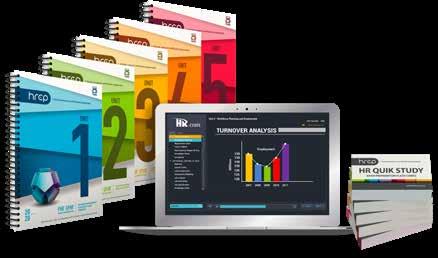
Why Certification is the Best Choice:
CALL TODAY TO FIND OUT MORE 1.877.472.6648 ext. 3
sales@hr.com | HR.com/prepcourse Group
2
|
Rate Options 1
3
Hybrid Work And Wellness: Going The Distance For Engagement
Create a helpful, not harmful, hybrid environment
By Laura Neuffer, Carebook Technologies
Technology and employee benefits like employee wellness programs bridge the gap in hybrid workwhich appears to be here to stay.
It’s been almost three years since Covid hit us, and over 25% of employees still work remotely. As a result of the health concerns with the community spread of Covid, more employees now have a hybrid work environment. However, despite its many benefits, it’s well known that remote and hybrid workers often feel isolated: in fact, 70% of remote employees reported feeling left out of workplace relationships and programs.
Fortunately, technology has adapted to reach millions of remote workers and help them reconnect with coworkers. Advancements in web portals and fully integrated, interactive apps provide equal access to employee wellness programming. No matter where they’re located, distant employees and their beneficiaries can fully participate in employee benefits offerings like wellness programs. All it takes are the right tools.
Fully digital well-being programs are becoming the rule - not the exception - in many industries where an increasing percentage of employees continue to work remotely. It’s clear to see why wellness programming is known to foster meaningful working relationships
and communicate to employees that they’re supported and valued by the organization.
The Evolution of Hybrid Work Environments
In a survey conducted by the U.S. Bureau of Labor Statistics, 29% of wage and salaried workers in 2017-2018 had the option to work occasionally from home, but only 15% utilized it. In fact, only 2% of the 10,000 survey respondents identified themselves as working remotely full-time.
These numbers are reflective of the pre-pandemic thinking surrounding remote and hybrid work. Many organizations didn’t have tools to support remote workers or were skeptical about the productivity of non-office employees. But as the pandemic began to pose health and security concerns, businesses had to re-evaluate their remote working policies. By May of 2020, 60% of economic activity in the U.S. was driven by remote workers. Businesses had to adapt processes to support their growing remote workforces
How to Manage a Hybrid Environment
Signs overwhelmingly suggest that remote and hybrid work environments are here to stay. The following steps can help organizations support the unique needs of a changing workforce.
Human Experience Excellence presented by HR.com January 2023 24 Submit Your Articles
TOP PICK
Establish Collaboration Policies for Hybrid Teams
1. One of the key foundations of successful work practices is clear communication and collaboration. With distributed teams, in-person communication is replaced with digital substitutes, which can often lead to more team conflict and a lack of employee social identity.
2. As businesses began adopting hybrid workforces, 73% of executives considered the shift to remote work successful. But businesses found that employees sometimes lacked the tools to collaborate effectively. It’s important to ensure virtual and hybrid teams remain socially connected, but businesses should take this a step further by encouraging cross-team and cross-department digital collaboration.
3. Start by establishing collaboration policies and providing supporting resources that allow them to work asynchronously. They should be documented, routinely communicated, and encouraged by leadership. Next, businesses should invest in proven resources such as virtual meeting tools, project management solutions that encourage distributed collaboration, and seamless access to benefits like a fully digital wellness program.
Invest in Technology That Supports a Hybrid Workforce
Employees working from home need digital tools that allow them to maintain work continuity in their remote environment. For example, paper processes should be upgraded to digital solutions that can support all employees, regardless of their work location. Similarly, benefits like wellness programs should be digitized for equal access among all employees. This is possible with tools like an all-inclusive wellness platform, virtual health coaching, digital team wellness challenges and more.
When asked what tools were most important for remote productivity, employers cited technology and equipment. Investing in technology that equally supports onsite and remote staff is critical for a
hybrid organization to maintain productivity, inclusion and well-being for all.
Fully Digital Employee Wellness Programs
Just like digital team collaboration tools, employee wellness programs should be designed with a digital-first approach. In-person, hybrid and remote employees should have access to all the same programs and offerings, like team challenges, info sessions, health coaching, health risk assessments, goal setting and more. The best way to achieve this is with an interactive app or web portal with a single-user login. Bundling everything behind a single login boosts engagement by making it easy to participate; requiring multiple logins can be a barrier to participation.
Program components that the web portal and/or app should include:
● Medical records
● Prescription documents
● Total health assessments focusing on biometrics, lifestyle, psychological, organizational, financial well-being, and more
● Access to medical professionals and well-being coaches
● Engaging discussion boards
● Personalized health education content
● Individual screening reminders
● Interactive wellness challenges
Interactive well-being challenges can include step/ activity tracking competitions (done either on a team, with a buddy/partner, or individually), and wellness challenges in which participants earn points by completing healthy habits related to a certain topic, like healthy eating, stress reduction, better sleep, etc.
Wellness challenges should focus on highly relevant, personally meaningful aspects of health, based on information gathered in health assessments. This kind of personalization not only maintains high engagement but also helps connect coworkers, beneficiaries, and medical professionals to strengthen relationships and boost morale, despite geographical distance.
Human Experience Excellence presented by HR.com January 2023 25 Submit Your Articles
Work And
Going The Distance For Engagement
Hybrid
Wellness:
How to Engage Remote Workers and Beneficiaries in Wellness
The key to reaching and supporting remote workers is fully digital communications and programming. When all aspects of organizational health and well-being programs are available online, fully remote and hybrid employees can participate as easily as those in person.
Including beneficiaries can increase participation as well. Extending invitations to info sessions, sending reminders about signing up, and providing them with individual accounts on the wellness portal or in the company app are just the first steps. To maintain engagement, the program needs to provide fun social content such as group or team challenges; information on topics that are personally relevant (perhaps based on health assessment data), and more. This creates an opportunity for users to connect, participate, and benefit.
Add an All-In-One Virtual Wellness Program
As workplace dynamics shift, employees undergo change and uncertainty. They must adjust to new procedures and tools, which can require behavior changes. It can be even harder for organizations to understand and prioritize the health and well-being of their teams when employees are distributed.
Businesses should utilize a customized all-in-one virtual wellness program to holistically support new
behavior changes and prioritize employee health in hybrid environments.
Virtual wellness programs connect hybrid teams through health assessments, self-help programs, biometric management, incentives, social collaboration, and more. Employees can choose their own benefits and create personalized programs based on their preferences and their unique working conditions.
Create a Helpful, Not Harmful, Hybrid Environment
The enormous shift to remote work has radically affected workplace dynamics and helped destigmatize remote and hybrid work environments. Many believe that these changes will carry forward indefinitely, making it a priority for businesses to adopt long-term practices to support these different work environments.
Managing a distributed workforce can be challenging, but with clear communication, the right technology, and fully digital health and wellness programs, businesses will be prepared to adapt to evolving circumstances while supporting the effective collaboration and health of their hybrid teams.
Laura Neuffer, M.S., has ten years of experience in corporate wellness. Laura is now at Carebook Technologies creating technology and programming that is used in worksite wellness programs around the world. Laura is also a registered yoga instructor and a former university adjunct professor of communications.
Would you like to comment?

Human Experience Excellence presented by HR.com January 2023 26 Submit Your Articles
Work And Wellness: Going The Distance For Engagement
Hybrid
How To Make Your Employees Feel Valued
Recognition must be genuine, specific, sincere, and timely
By John Tschohl, Service Quality Institute
Irecently asked a friend how often, during her career, she had been complimented or recognized for her work. Her response? “Not often enough.”
Unfortunately, that is true for most employees. I wonder why that is. I have some ideas that I’ll share with you here. The first is denial. Most managers and supervisors think, “I pay Charlie a lot of money to do what he does for the company. Why would I also have to praise him and recognize him for doing what I pay him to do?”
That fact is that money will get employees through the doors of your business, but it won’t keep them there. What will? Recognition. Praise. Feeling valued. Let’s face it, most managers and supervisors have had no training in how to effectively recognize employees. Many were simply promoted to their positions without being provided the training necessary to interact with—and motivate—employees.
I’ve found that the most intelligent people often are the worst when it comes to soft skills. They have a hard time getting out of their own heads and verbalizing what they need others to hear. They don’t realize that you can’t take employees for granted. You have to let them know you value them and what they do for you.
In order to be effective, recognition must be genuine, specific, sincere, and timely. It’s not enough to recognize employees and their contributions to the company once a year during their performance
reviews. It’s also not enough to simply say, “Alice, you did a great job.” Tell her what job you are referring to, be specific about what she did that impressed you, and let her know how proud you are of her and her work.
It’s also important that you recognize employees in front of their coworkers. Doing so not only increases the pride those employees feel at being singled out and complimented, it motivates other employees to do well and also be recognized.
You can take that a step further and recognize employees in front of customers. For example, you’re walking the floor and notice Allan assisting a customer. You might stop, introduce yourself to the customer, and say, “Allan is one of our best employees. I know he’ll do a great job in taking care of you.”
One of the great things about using recognition as a motivator is that it doesn’t cost you anything. In fact, it actually saves you money by reducing employee turnover and the costs associated with hiring and training new employees to replace the ones you lost. If you want to give someone a raise, you have to get approval from others to do so. But, if you want to recognize them, it costs nothing so no approval is necessary. You are free to reward employees with your words and build a team that works well together and that will drive your business. If an NFL coach doesn’t motivate his players to work together as a team and win games, that coach will be fired.
Human Experience Excellence presented by HR.com January 2023 27 Submit Your Articles
My research shows that, given a choice of $100 or a complimentary note written on a manager’s personal stationary, most employees will choose the note. Why? Because, once they spend that $100, it’s gone. But a handwritten note is personal and lasting. I have a friend who has saved such notes over the course of her career. She keeps them in a file and reads through them once a year to remind herself that what she does is appreciated.
Now, I must say this: There are some employees who simply cannot be motivated, no matter what you do. Although they physically show up every day, they have mentally left you. Ford Motor Company announced a few months ago that it is giving its white-collar employees, who have been identified as underperformers, the option to leave and take a severance package or enroll n a performance enhancement program. Employees who choose the enhancement program but whose performance doesn’t improve will be terminated with no severance package.
Ford Motor Company realizes what too many companies don’t: If you’ve tried everything you can to recognize and motivate employees—and nothing changes—cut your losses, and let them go.

John Tschohl is the President and Founder of Service Quality Institute— the global leader in customer service—with operations in more than 40 countries. He is considered one of the world’s foremost authorities on all aspects of customer service and recently released his latest book, Relentless.
you like to comment?

Human Experience Excellence presented by HR.com January 2023 28 Submit Your Articles
How To Make Your Employees Feel Valued
Would
By Brett Farmiloe, Terkel.io

Human Experience Excellence presented by HR.com January 2023 29 Submit Your Articles
9 Businesses Are Updating Their Employee Excellence Strategies
2023
How
in
Recognizing employee success, adding competitive benefits and much more From including more transparency to adding competitive benefits, here are nine answers to the question, “Can you share your best insights with how you will plan new-year employee excellence strategies that align with 2023 HR trends?” ● Promoting Transparency ● Recognizing Employee Success ● Investing in Employee Engagement Initiatives ● Rewarding Hardworking Employees With Extra Days Off ● Building Structure for Leadership Coaching ● Increasing Workplace Flexibility ● Emphasizing a DEIB Focus ● Personalizing Experiences Through Data-Driven Systems ● Offering Competitive Benefits Amid Salary Increase Absence TOP PICK
Antreas Koutis, Administrative Manager, Financer


Promoting Transparency
I want to create an environment where employees feel like they can openly give and receive feedback without fear of retribution. This means being clear about expectations, providing regular updates on performance, and being open to constructive criticism.
I also want to focus on creating a more diverse and inclusive workplace. This means promoting from within, encouraging employees to explore their unique talents and perspectives, and valuing different opinions.
By focusing on these trends, I hope to create a more engaged and productive workforce that feels invested in the company’s success.
Recognizing Employee Success
Employee excellence comes from strong leadership. Set a positive mission, vision, and clear goals for the employees. Communicate regularly about company milestones, success, plans, and strategies to tackle each new challenge.
A culture of excellence starts with selecting the right people for the right job. As the new year approaches, leaders should assess their employees and their skill sets to be sure they are in the right role. Perhaps an employee that’s struggling in sales would be better suited to marketing.
Encourage the development and new opportunities to learn. This investment in their career path is not only for the good of the employee but also for the company. It means lower turnover and less burden on the company to fill horizontal openings with talent that is already up to speed on the business.
Recognition of excellent performance is typically the number one reason employees feel motivated and want to stay within a company. Don’t overlook the power of appreciation.
Heather Smith, CPO & Sr. Account Executive, Flimp Communications
Human Experience Excellence presented by HR.com January 2023 30 Submit Your Articles How 9 Businesses Are Updating Their Employee Excellence Strategies in 2023
Linda Shaffer, Chief People Operations Officer, Checkr

Investing in Employee Engagement Initiatives
In 2023, we expect many organizations will focus on creating innovative workplace experiences through flexible work hours and remote working options, as well as investing more into employee wellness initiatives and mental health support. As a C-executive, it’s important to ensure that your employees feel supported, engaged, and motivated both in the office and remotely.
At our organization, we plan on investing heavily in employee engagement initiatives such as increased team-building exercises, mentorship programs, and continuing education courses.
We are also focused on developing an open feedback system so that employees can provide anonymous feedback on company objectives and team performance. Additionally, we will invest in employee wellness programs to ensure that our staff is getting the support they need both mentally and physically.
Daniel Apke, CEO, Land Investing Online

Rewarding Hardworking Employees With Extra Days Off
Our leadership team plans to give extra days off as a reward for recognizing the best-performing employees. Next year, there’ll be a heightened yearning for work-life balance, and we want to support our employees’ well-being by acknowledging their need for extra days off to spend with their families or care for their own health.
A better work-life balance will be on top of employees’ and even candidates’ minds when applying for a job. If you, as a business, can’t prove that you can give this need to the members of your organization, you risk getting the best talents.
Human Experience Excellence presented by HR.com January 2023 31 Submit Your Articles
How 9 Businesses Are Updating Their Employee Excellence Strategies in 2023
Luciano Colos, Founder & CEO, PitchGrade


Building Structure for Leadership Coaching
While we have been coaching our leadership team since we started this company, it has not been structured. Therefore, we will implement a more structured coaching model for our leadership team in order to better support them and allow us to continually improve our coaching model.
This new coaching model will include monthly one-on-one coaching sessions, quarterly peer coaching sessions, and annual leadership assessment and development plans. We will start with this coaching model in 2023, and we will use the new year to align with 2023 HR trends to continuously improve our coaching model.

Increasing Workplace Flexibility
One thing I have noticed over the past few years is an increase in workplace flexibility. This has been driven by increased recognition of the importance of work-life balance, but it also speaks to a desire for organizational leadership to take a more active role in ensuring that their employees can enjoy their work both at home and at work.
To do this effectively, organizations must work with their employees to identify their personal goals, then make sure those goals are within reach through flexible work arrangements or other means. This is where HR can play a key role: by guiding how best to achieve those goals while also helping employers assess whether they have all the resources necessary to support those efforts.
Andrew Griffith, Owner, Garden Furniture
Human Experience Excellence presented by HR.com January 2023 32 Submit Your Articles
How 9 Businesses Are Updating Their Employee Excellence Strategies in 2023
Linn Atiyeh, CEO, Bemana

Emphasizing a DEIB Focus
A renewed focus on diversity, equity, inclusion, and belonging is a 2023 HR trend—but one that I hope never falls out of popularity. As a recruiter and small-business owner, I see the benefits of inclusive hiring practices daily. It’s not about meeting a quota, but creating a workforce that represents clients and the country.
But leaders should remember that hiring isn’t the only time to implement DEIB policies; the holiday season is a perfect time to jump-start a new-and-improved work culture. Ensure employee excellence by creating a seasonal atmosphere that’s welcoming to all cultures and religions. Workers do their best when they feel supported, recognized, and included.
Maximilian Wühr, CGO & Co-Founder, FINN

Personalizing
Experiences
Through Data-Driven Systems

Our excellence strategies will shift to acknowledge individual values or preferences and reward them accordingly. Personalization has touched nearly every aspect of the HR department, and excellence strategies are no different.
Personalized rewards are another critical part of a workplace based on true DEIB values, where diversity is respected and encouraged— standardized systems no longer work.
We’re moving away from one-size-fitsall excellence strategies and using data-driven performance software to help us adopt a flexible system that doesn’t become a burden to manage. Where employees can set their own goals and rewards, we’ll actually see a decrease in the need for hands-on help from HR.
Human Experience Excellence presented by HR.com January 2023 33 Submit Your Articles
How 9 Businesses Are Updating Their Employee Excellence Strategies in 2023
Offering Competitive Benefits Amid Salary Increase Absence

Competitive benefits help us align our employee excellence strategy with HR trends in 2023. Flexibility, compensation, and work satisfaction are vital components of meaningful employee experience.
It’s challenging to promise and deliver salary increases next year, but this is where our improved benefits come into play. This approach will allow us to tailor how we address our employees’ needs and give them the best value for their hard work and dedication to the company.

Human Experience Excellence presented by HR.com January 2023 34 Submit Your Articles
Josh Tyler, CEO, Giant Freakin Robot
How 9 Businesses Are Updating Their Employee Excellence Strategies in 2023
Brett Farmiloe is the Founder and CEO –and currently CHRO - of Terkel.io Would you like to comment?
Creating Coach-Guided Workplaces In 2023
Increased adoption of professional coaching will become a leading trend
By Magdalena Nowicka Mook, The International Coaching Federation
Employee expectations and experiences in the workplace shifted during 2022. Experts report that hybrid work, which may have waned somewhat with the end of the pandemic, is now here to stay as technology evolves and rapidly shifts the way we work. As a result, equipping managers and leaders for hybrid and remote teams continues to be a focus.
Building a more engaged workforce remains essential. There also is an increased spotlight on the dynamics of a multigenerational workforce. And let’s not forget that an employee’s well-being and mental health remains a valid concern. With these changes, it is no surprise that coaching is experiencing a rise in demand among both individuals and organizations.
Coaching strives to support individuals and leaders that are open to exploring their skills and reaching their highest potential. Employee engagement with coaches and leader adoption of coaching skills, long been an interest within organizations, is likely to grow even more as the workforce adjusts to the new workplace reality and demands of modern leadership.
Evolving Tech Pushes the Evolution of the Workspace Forward
Technological advancement is on the mind of every CEO, no matter what their sector. Even in terms of the methods and systems of coaching, organizations and HR departments must adapt. The application of technology, especially Artificial Intelligence, is increasingly prevalent. AI has the capacity to support
coaching’s availability and accelerate adoption without replacing the human coach. In the coming year, this is new terrain many workplaces and leaders will be stepping into.
A blessing in disguise from the pandemic and increased hybrid capabilities is that coaching is now offered virtually to more people, especially organizations that are spread across the country and the globe. Technological advances support the ability to work and get coached wherever we may be. In 2023, we expect to see even more streamlined coaching systems. Advanced systems are available now to allow organizations to provide leadership development to more people in a highly efficient way, as long as the coaches engaged are highly trained and adhering to global standards.
Strengthening a Multi-Generational Workforce
Concurrently, younger generations are entering the workforce with a new set of expectations, accelerated by the experience of the pandemic and hybrid workplace. There is a trend of increased focus on coaching for young professionals in a multigenerational workforce. Newer professionals are generally more aware and incredibly receptive to outside support for achieving their work goals. Coaching helps bridge the gap between different generational mindsets and, thus, supports professional development that fosters unified and collaborative teams.
Human Experience Excellence presented by HR.com January 2023 35 Submit Your Articles
We have seen that these younger individuals wish to be seen and heard not as “workers” but as partners and contributors to their organizations. They have a stronger desire to feel they are part of a solution, which requires a mindset shift among some older professionals who have been in an industry for a longer period and are used to different models of leadership and management.
A key value of coaching is its ability to enable managers to understand new dimensions of modern leadership. With young people coming into leadership responsibilities earlier than ever, both sides of the relationship need to be prepared to work alongside people who have the expertise on one hand, and passion on the other.

We will continue to see a trend of coaching as a method to bridge this gap between young professionals and older generations. Coaching can help create open dialogues and foster an environment of curiosity and openness, leading to tremendous success.
The Trickle-Down Effect of Coaching
Just as the need for a coaching approach as a skill for managers and leaders continues to increase in importance, coaching also must become increasingly holistic in its perspective. Coaching engagements and the adoption of coaching skills have long been an interest in organizations looking to foster workforce engagement, talent development, and leadership transformation. But coaching has an additional effect that produces broader benefits. In the coming year, organizations will increasingly consider the trickle-down effect of success when a manager has the capacity to support others. We have found that adopting a coaching mindset has substantial benefits not just for the organization but for the individual personally. ICF research shows higher engagement and working alliance with the manager or team leader the more often they apply coaching skills. There is an increased sense of interest, empathy and consideration of the whole person and not just the individual who shows up for work. When people feel seen and cared about, they work better as individuals and team members.
Human Experience Excellence presented by HR.com January 2023 36 Submit Your Articles
Creating Coach-Guided Workplaces In 2023
There has been a long-standing desire to quantify the results of leadership coaching. The emphasis on return on investment will surely continue into 2023. HR professionals must be able to quantify outcomes and measure the impact of their coaching programs. Even if a coaching program has an internal champion, complex data provides evidence for executives to see the benefits and keep coaching as a line item within a budget. Metrics of success also can increase the desire for the program and provide an opportunity for its growth and expansion.
The future is bright for coaching and its support for global leadership development. The hybrid workplace with multigenerational teams and evolving systems accelerated by technology will become more

productive, more collaborative and more rewarding, not just for the organization but for the individuals as well.
To prepare for this future, leaders should begin now to anticipate these changes and think about how their organization will respond. The best leaders will recognize these changes as opportunities for growth and advancement. As a leader myself, I look forward to what is to come.
Recommended Resources

● https://psycnet.apa.org/fulltext/2019-23918-001.pdf
● https://siepr.stanford.edu/publications/policy-brief/ hybrid-future-work
Magdalena Nowicka Mook is the Executive Director and CEO of the International Coaching Federation (ICF). Previously, she held positions with the Council of State Governments and the U.S. Department of Agriculture’s Economic Research Service. She is a trained coach and a frequent speaker on subjects of coaching and leadership. She received a master’s degree in economics and international trade from the Warsaw School of Economics, Poland. She also graduated from the Copenhagen Business School’s Advanced Program in International Management and Consulting.
Would you like to comment?
Human Experience Excellence presented by HR.com January 2023 37 Submit Your Articles
Creating Coach-Guided Workplaces In 2023
Why And How To Use Stay Interviews
Successfully
Build productive one-on-one relationships with employees
By Kevin Sheridan, Kevin Sheridan LLC
Defining Stay Interviews
I define a Stay Interview as “a structured conversation a manager has with an individual employee to learn specific actions the manager can take to strengthen the employee’s engagement and retention with the organization.”
Why Do Stay Interviews?
Stay Interview questions help your most valuable team members understand that:
● You recognize and appreciate their loyalty.
● You care about more than just their performance.
● You are open to making changes that would help them become more engaged and less likely to leave the organization.
Stay Interviews also help you discover:
● Warning signs that indicate a key team member needs more support and/or guidance.
● Ways to retain the employees in which you have invested the most time and resources.
● Low-or-no-cost changes that could reenergize your employees’ commitment and engagement.
Furthermore, Stay Interviews with a smooth implementation also help build trust with your key team members, which may mean that they will talk to you about any concerns prior to them looking for a new job at another organization.

Preparing to Have Stay Interviews
Preparing for the questions you may encounter during the stay interview is paramount. You want to be able to direct employees to resources they have available to them and begin the process of understanding their job-related perceptions. Remember that this is an exercise in listening and discovering opportunities for improvement.
Human Experience Excellence presented by HR.com January 2023 38 Submit Your Articles
To prepare for a Stay Interview, here are some action items to complete:
● Have your department or area managers meet to determine a list of potential top issues employees face.
● Develop a list of available internal resources.
● Create your own custom Stay Interview questions.
Based upon my 35 years as a Management Consultant to the Human Resources marketplace, I’ll

make this easy for you by providing my most trusted key Stay Interview questions:
1. Is your job making the best use of your skills and abilities?
2. What is something new that you would like to learn this year?
3. How can our organization help you become more successful in your job?
4. Are we allowing you to reach your maximum potential?
5. What are three things that we could change here that would help you reach your full potential?
6. What parts of your job do you like the most and the least?
7. What part of your job makes you want to jump out of your bed in the morning excited for work?
8. What makes you want to hit the snooze button?
9. Do you receive enough recognition?
10. What kind of recognition would be most meaningful for you?
Stay interviews will not always yield perfect outcomes, but they will certainly heighten employee engagement and retention at your organization. Most importantly, Stay Interviews will help your leaders build more productive one-on-one relationships with their employees.
Kevin Sheridan is an internationally-recognized Keynote Speaker, a New York Times Best Selling Author, and one of the most sought-after voices in the world on the topic of Employee Engagement. For six years running, he has been honored on Inc. Magazine’s top 100 Leadership Speakers in the world, as well as Inc.’s top 100 experts on Employee Engagement. He was also honored to be named to The Employee Engagement Award’s Top 101 Global Influencers on Employee Engagement for five years in a row. Kevin’s premier creation, PEER®, has been consistently recognized as a long-overdue, industry-changing innovation in the field of Employee Engagement. His first book, Building A Magnetic Culture, made six of the bestseller lists including The New York Times, Wall Street Journal, and USA Today. He is also the author of The Virtual Manager, which explores how to most effectively manage remote workers.
Would you like to comment?
Human Experience Excellence presented by HR.com January 2023 39 Submit Your Articles
Why And How To Use Stay Interviews Successfully
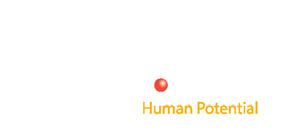
ePublication EditorialCalendar2023 Checkoutthenewandupcomingthemed HRtopicsinHumanExperienceExcellence -Engagement,Performance,Rewards &Recognition Check ePublications Editorial Calendar Here. Would you like to submit an article? | Write to us at ePubEditors@hr.com Submission Guidelines 1 New Ideas and Tools for Effective Performance Management / Future of Performance Management Feb 2023 2 The State of Human Experience in the Workplace Mar 2023 3 The State of Rewards and Recognition Programs and Tools Apr 2023 4 Employee Productivity May 2023
VIRTUAL
VIRTUAL EVENTS
WEBCASTS
January
EVENTS & HR.COM WEBCASTS UPCOMING
our Upcoming Webcasts Schedule and Register Today!
our Upcoming Virtual Conference Schedule and Register Today!
Ideas and Tools for Effective Performance Management
www.hr.com/upcoming_webcasts www.hr.com/virtualconferences View
View
New
REGISTER
of Human Experience in the Workplace
REGISTER
Minimum Wage Rates and How They May Impact Your Business
January 31, 2023
The State
February 15-16, 2023
Rising
PM ET REGISTER
Succession Made Simple: Do it right and do it (much) faster.
January 24, 2023 11:00 AM - 12:00
Leadership
PM ET REGISTER
an Onboarding and Learning and Development Program for a Growing Company
31, 2023 12:00 PM - 1:00
Building
ET REGISTER
the Low Hanging Fruit. A Tip To Be Successful on the HRCI & SHRM Exams.
January 25, 2023 06:30 AM - 07:15 AM
Pick
ET REGISTER
Future of Upskilling and Employee Learning
February 9, 2023 12:00 PM - 12:30 PM
The
REGISTER
February 22, 2023
Emotional Connection Is The Key To Employee Engagement And Retention
How does emotional connection drive employee engagement?
By Joe Hart, Dale Carnegie Training
In a new study by Dale Carnegie and Associates, researchers found that post-pandemic employees are prioritizing their personal well-being now more than ever. In the survey of over 6,500 full-time employees worldwide, workers indicated that they are willing to leave workplaces that they feel are “indifferent to their needs and fail to engage meaningfully with them.” In short, when employees have no emotional connection to their employer, they are more likely to leave the company.
Creating an emotional connection with employees is crucial to engagement and retention, and it’s up to leadership to build a humancentered, emotionally engaging workplace. This can be done
when leadership forges a culture of mutual trust and respect and intentional communication with employees. As I’ve stated before, to grow employee engagement, every level of leadership needs to forge a genuine emotional connection between employees and the organization.
How Do You Encourage an Emotional Connection with Employees?
A great way to encourage an emotional connection with employees is by focusing on the emotional drivers of engagement. A nationwide survey of 1,500 employees found that feeling valued, confident, inspired, enthused, and empowered are the key emotions that lead to engagement in the workplace.
When employees consistently feel even one of these positive emotions about their immediate supervisor and place of work, their level of engagement increases. However, among employees who reported feeling at least three of the key emotions, 52% were actively engaged and disengagement decreased to only 5%.
Conversely, negative emotions such as irritation, discomfort, and disinterest drive employee engagement down. It’s important to note that typically the emotions mentioned here are in reference to employees’ direct supervisors. The people in leadership positions at a company are key to fostering the positive emotions that will drive employee engagement and increase retention rates.
Human Experience Excellence presented by HR.com January 2023 42 Submit Your Articles
Making employees feel valued and confident leads to greater inspiration, enthusiasm, and empowerment in their daily tasks and decision-making. As leaders consider how best to make their employees feel valued and confident to encourage emotional connection and engagement, a few things to think about are mutual trust and respect in the workplace. Actively listening and communicating with employees, as well as finding shared interests to bond over is also important.
Mutual trust and respect are crucial to fostering feelings of value and confidence. Trusting that employees will do their jobs correctly, without micromanaging them, is a way to show respect for their intelligence, work ethic, and
expertise. In turn, employees will feel confident in themselves and valued by their leadership, which will increase their emotional engagement at work.
Having shared interests with employees can help foster a positive emotional connection as well. This doesn’t necessarily require participation in shared activities or events outside of work, but showing an interest in their well-being, personal interests, and life in and out of work.

Facilitating genuine conversations with employees about their life and interests goes a long way to show they are valued and respected. Leaders should also assure that all employees understand how their work
impacts the overall goals, performance, and vision of the company. This allows employees to see that their work is meaningful, important, and valued by management. This goes a long way in establishing an emotional connection and boosting engagement at all levels.
Finally, when communicating with employees, it’s essential that leaders actively listen. Actively listening shows employees that leadership truly respects and values their time, thoughts, and ideas. Positive communication efforts that display trust and respect will increase the likelihood that employees feel valued and confident, and will engage in their work with enthusiasm.
Human Experience Excellence presented by HR.com January 2023 43 Submit Your Articles Emotional Connection Is The Key To Employee Engagement And Retention
How Does Emotional Connection
Drive Employee Engagement?
Emotional connection humanizes the work that employees do every day. So often, employees feel micromanaged, and that their tasks are meaningless. They feel that leadership only

cares about the bottom line. When employees experience this, feelings of irritation, discomfort, and disinterest set in, leading to increased disengagement. They’ll do the bare minimum, and unenthusiastically take on new work when leadership assigns new tasks or projects.
On the contrary, when leadership makes employees feel heard and valued, they will be more likely to engage in tasks with greater enthusiasm and productivity. Reactions to employees’ immediate supervisors explain 84% of how employees feel about their organization. To increase employee engagement, leadership should prioritize making their employees feel valued, confident, inspired, enthused, and empowered.
This is crucial to engaging and retaining employees. The survey on the emotional drivers of engagement found that “those who emotionally connect in a positive way with an organization feel a sense of ownership and are more likely to stay with it, delivering superior work in less time and reducing turnover costs.” Employees spend most of their time at work, away from their families. If leadership prioritizes making employees feel valued and emotionally cared for, they’ll retain more employees who will do great work for them.
Joe Hart is the President and CEO of Dale Carnegie Training, the most experienced training organization in the world. Early in his tenure as CEO, Hart had to navigate the company through an unforeseen global pandemic adeptly. During the Covid-19 pandemic, Hart led a lightning-fast change of the business model shifting business activities from almost exclusively in-person training to repositioning the business to generate 95% of its revenue online. As a Dale Carnegie graduate himself, Hart’s first business, InfoAlly, provided online programs to support the Dale Carnegie, Leadership Training for Managers, and Sales Advantage Courses.
Would you like to comment?
Human Experience Excellence presented by HR.com January 2023 44 Submit Your Articles
Connection Is The Key To Employee Engagement And Retention
Emotional
Thank you for partnering with us!
Paycom (NYSE:PAYC) offers cloud-based human capital management software to help businesses streamline employment processes, from recruitment to retirement. With a robust suite of products including payroll, time and labor management.

Jobvite is a comprehensive talent acquisition suite that powers a marketing-inspired recruiting approach from first look to first day.

THANK YOU
PARTNER WITH US
LEARN MORE
LEARN MORE



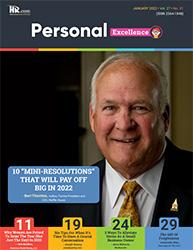


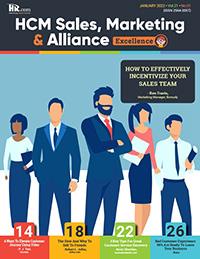
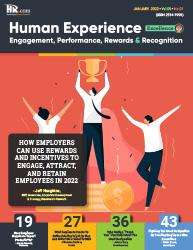

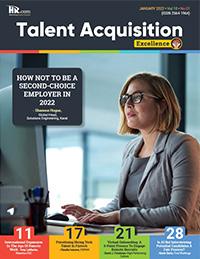



Like to submit an article? Use our online submission form or for more information go to www.hr.com/ExcellencePublications Publications 13 Targeted Publications to Reach Your Audience Informing, Educating, Enlightening and Assisting HR professionals in their personal and professional development, the Excellence series offers high-quality content through the publications!



























 Dr. Beverly Kaye
Dr. Beverly Kaye
































 By Kim Baker, Vivid Performance Group
By Kim Baker, Vivid Performance Group










































